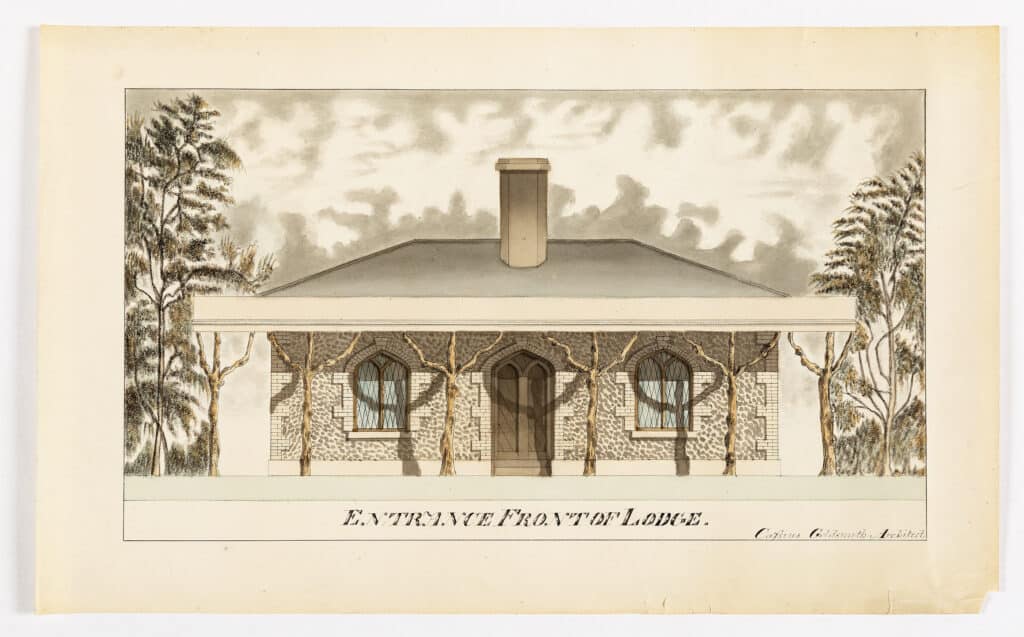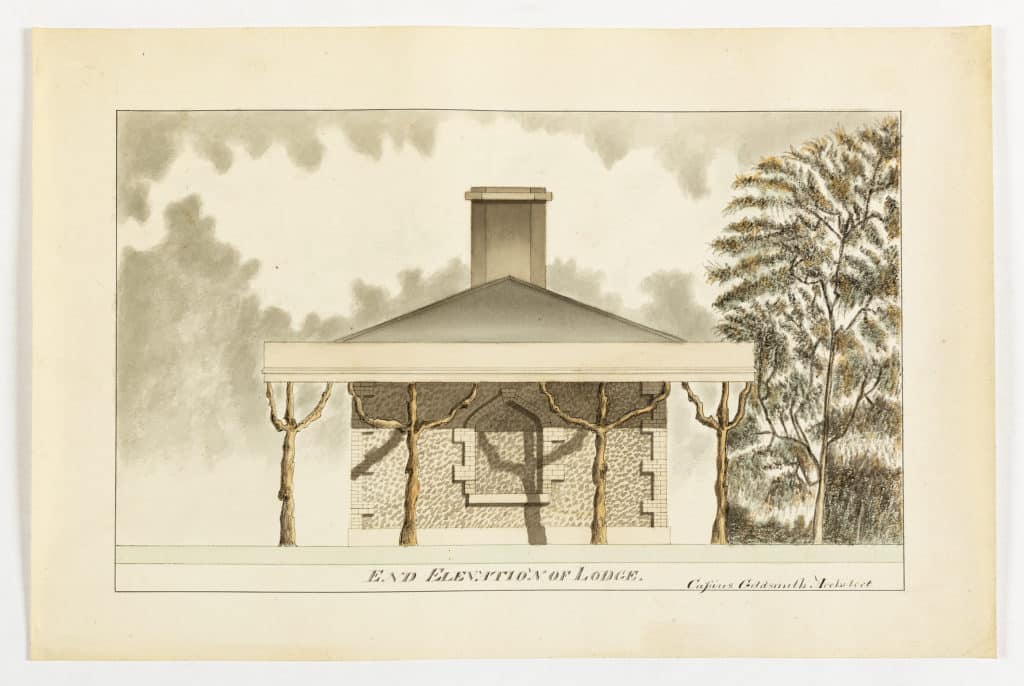Behind the Lines 5

Boughton Monchelsea
Maidstone
September 26, 1828
My lord,
Please be so good as to find designs for the lodge that you commissioned, a habitation for your woodman, John Platt. I earnestly hope that it will be the ornament that you desired for your park improvements. I also enclose the books that you kindly lent me to study, on discovering that my taste lies with the classical, rather than the ornée. So herewith: Mr Pocock’s Architectural Designs for Rustic Cottages, Picturesque Dwellings etc.; Mr Bartell’s Hints for Picturesque improvement in Ornamented Cottages and Mr Lugar’s Architectural Sketches for Cottages, Rural Dwellings and Villas, all of which I have taken as much note of as I felt able.
Please find too, Mr Wood’s Series of plans for Cottages or Habitations of the Labourer, which you considered too out-of-date to be of use, but added to your loan on impulse. Admirable John Wood! I took his statement to heart: ‘No architect can form a convenient plan unless he ideally places himself in the situation of the person for whom he designs; ’ and whilst not wishing to inspect Platt’s current quarters, which you indicated are in serious disrepair, I took the liberty of enquiring of your steward, the extent of Platt’s family. He advised me that Platt and his wife have a veritable quiver-full. I have provided the cottage with 2 sleeping chambers of 9’ 6” square and a generous living room of 12’ x 17’, but regret that the sum that you set apart for this cottage will not allow for an upper story, which would enable the boys and girls to sleep separately.

I note that you had marked the following passage in Mr Bartell’s work: ‘the characteristic mark of a cottage is humility, as if, conscious of its inferiority, it should appear to retire beneath the shelter of its friendly woods…’ so I will therefore not propose this loftier improvement on the present plan, though, in truth, I would much prefer it.
The flints I have ascertained can be easily obtained from the coast, you will observe that I have given the cottage what I regard as a little gravitas by fashioning them into quoins. I am mystified how otherwise to deal with this building material, of which I have little knowledge.
May I also draw my lord’s attention to the following points that, as your architect, further concern me:
As this is the lodge for the North Gate to the park, it will, by necessity, face north; I know that you are determined on diamond pane casements, but I worry that this will make the interior excessively dark, especially as the gable ends have blind windows. I gather from the steward that Mrs Platt occasionally does plain sewing for her ladyship and I am concerned this will entirely inhibit her working during all but the summer months. Further funds would allow for an east and west window in place of the current design for blind windows, or would you consider plain glass or maybe the new rectangular French windows? I know that you are anxious to prevent villagers walking through the park as was their habit, and larger windows would also allow the Platts a clearer view of miscreants.
The rustic verandah: I have never before used this type of ornament and am at loss as how to specify the wood. Might Platt be encouraged to seek out suitable trees? I would have suggested a straight pine, but gather that a gnarled appearance is desirable. You will see I have designed it to be purely ornamental and not structural, which could only be calamitous. The design also stands well without the verandah, and would even save a few guineas.

Could I also venture to advise your lordship most strongly against thatching the roof, which I regard as a fire hazard. I appreciate that you wish the lodge to be, in Mr Pocock’s words, ‘an interesting object in the scenery’, but the durability of a slate or stone roof is inestimably more satisfactory, although it will not engender ‘those innumerable tints and stains, those incrustations and enrichments produced by the hand of time’ which I gather are essential to the picturesque effects you are seeking, and which I am attempting to achieve while providing the Platts and their successors with a first rate cottage.
I would like to end with reference again to the excellent Mr Wood, who states that should the labourer’s home ‘be warm, cheerful and comfortable, he will return to it with gladness.’
I await your instructions and remain, my lord,
Your obedient servant,
Cassius Goldsmith

– Philippa Lewis